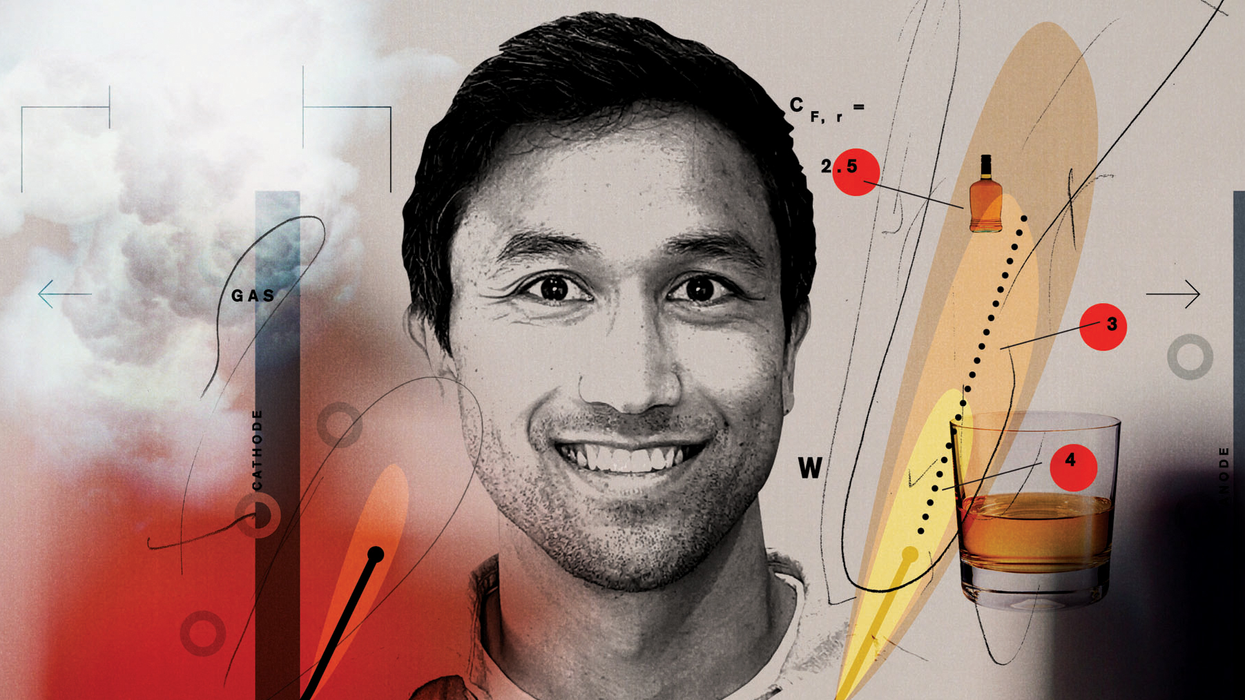Why Power a Whisky Still with Green Hydrogen?

Dozens of companies are trying to replace the typical method of producing hydrogen-from natural gas-with electrolysis, in which an electric current is used to split water into hydrogen and oxygen. The goal for many of these companies is green hydrogen," in which the electricity used comes from renewable sources.
Luke TanTan and his cofounders started Supercritical in 2020 with a mission to pioneer hydrogen technology that will enable a transition from fossil fuels. Prior to Supercritical, he was at the sustainable technology company Johnson Matthey working on hydrogen-to-methanol plants and hydrogen fuel cells.
Supercritical Solutions, a startup based in the United Kingdom, is pioneering a kind of electrolysis that begins with water in its supercritical state, which combines the properties of liquids and gases. The startup has found a partner in the liquor behemoth Beam Suntory. In Scotland, the two companies are taking the first steps that could lead to the world's first zero-emission, hydrogen-powered whisky production. Luke Tan, the cofounder and chief product officer of Supercritical, spoke to IEEE Spectrum about the project.
What sets Supercritical's technology apart?
Luke Tan: Supercritical has the world's first high-pressure, ultrahigh-efficiency electrolyzer. We deliver two main things. With high temperature we achieve class-leading efficiency. With high pressure, our electrolyzer is able to natively produce over 200-bar [20,000-kilopascal] hydrogen and over 200-bar oxygen without the need for any gas compressors. Essentially what we do is combine a typical water electrolyzer system and a typical hydrogen compression system into one, making a simpler solution for the end user and driving down costs.
How does using water in its supercritical state give you these advantages?
Tan: Operating at around 400 C allows faster electrochemical kinetics [and therefore faster reaction rates], which means that we require less power to produce a given amount of hydrogen. In addition, when you're producing more and more hydrogen in a typical electrolyzer cell, you will encounter mass transport limitations-this is where gaseous hydrogen will interfere with the liquid water trying to reach the electrically active sites. But because our produced hydrogen is also in a supercritical state, it can move away from the active site far more readily, and the reactant water can get into the active site with minimal resistance.
What sectors did you originally imagine you'd be applying this technology to?
Tan: Hydrogen goes into synthetic fertilizers, it goes into fuel refineries, and it goes into chemical production. And we are still targeting those sectors today. We did a project with ScottishPower that demonstrated that by delivering hydrogen with Supercritical's electrolyzer, we could drive down the cost of [producing] ammonia by 21 percent.
But how did you get involved in using hydrogen to produce whisky?
Tan: The whisky sector wasn't necessarily top of our list, but it certainly is a part of the puzzle that needs to be solved. Critically for us, it uses industrial heat, which is one of our target sectors. We want to use green hydrogen to decarbonize some of the biggest industries today that utilize fossil fuel to generate heat for their processes. During this project, Beam Suntory will demonstrate, for the first time ever, that they can use hydrogen in place of natural gas [to produce heat] directly under a copper still to create as good, if not better, whisky!
When will someone first sip a dram of whisky from the hydrogen-powered still? What will it taste like?
Tan: Well, I hope it tastes better than other whiskies; it will certainly feel better. Within the time frame of the actual project, Beam Suntory will produce spirit. But [the spirit] has to undergo a minimum of three years of maturation before it can be called whisky. And it's anticipated that this [batch] will be matured for nearer to 10 years to give it the credit it deserves for being the first of a kind.
This article appears in the November 2023 print issue as 5 Questions for Luke Tan."